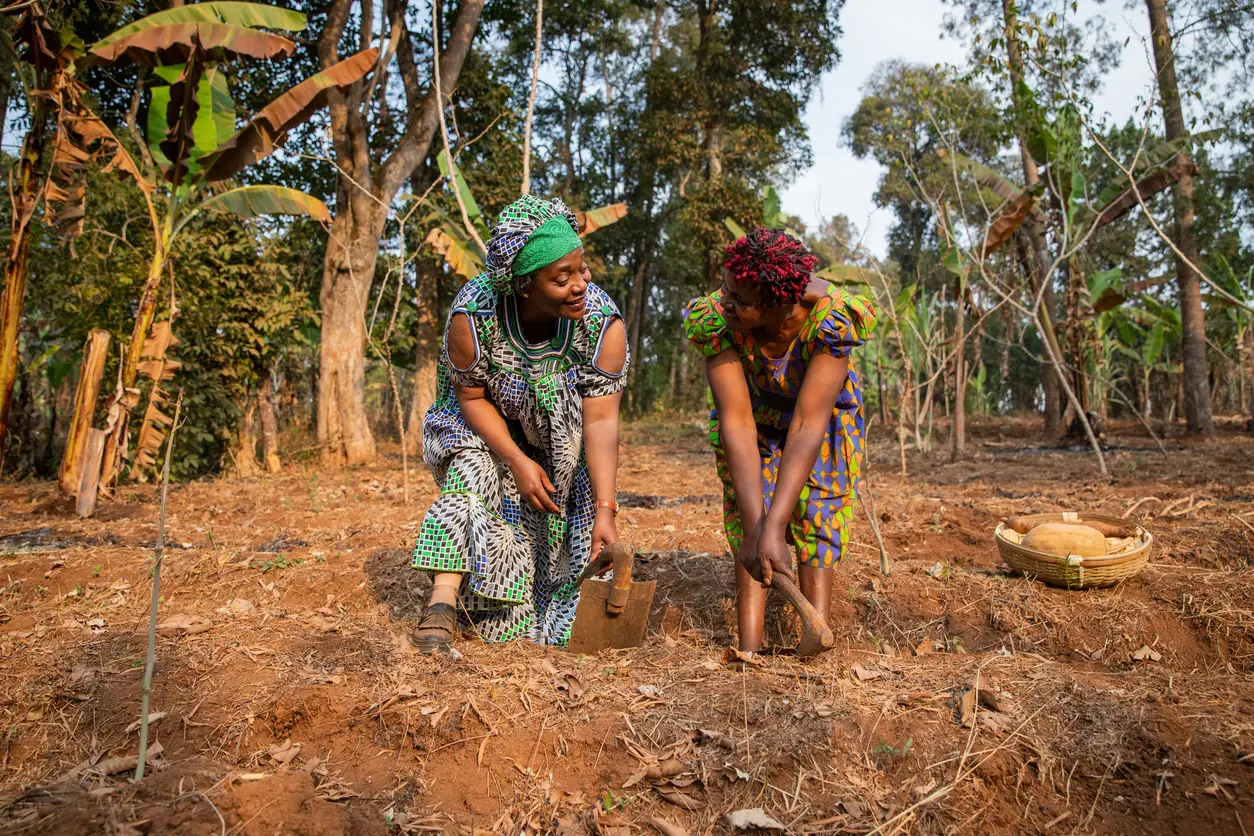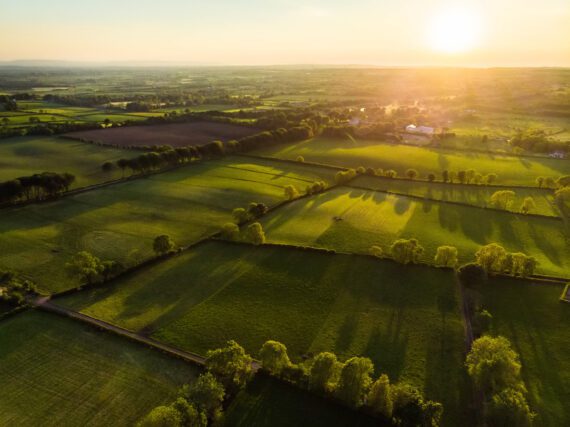By Anke Marais
Editor’s Note: Bread for the World Climate Intern Anke Marais recently conducted fieldwork in Malawi as the teaching assistant to a student group. She plans to work with the group to co-author a report for the International Institute of Tropical Agriculture. This article is based on that fieldwork.
Malawi – a small country in southern Africa that is also known as the “warm heart of Africa”– is a nation defined by both its rich agricultural heritage and stark economic burdens.
Malawi is among the world’s poorest countries. Nearly three-quarters (71 percent) of the population lives in extreme poverty. Malawi’s economy is dominated by agriculture, the sector where 80 percent of its population makes a living.
This extreme concentration leaves the country highly vulnerable to climate change, with impacts that are increasingly evident, including three major cyclones and severe drought over the past three years. Extreme weather has worsened hunger and malnutrition in rural communities where most families are subsistence farmers, eating mainly what they grow themselves.
The nation’s staple crop, maize – locally known as “chimanga”—dominates farming. Maize has significant disadvantages. It is not drought-tolerant, which is more important than ever due to weather extremes. Planting it season after season degrades the quality of the soil. Moreover, maize alone does not contain enough nutrients to qualify as a healthy diet. Farmers also grow crops like cowpeas, pigeon peas, groundnuts, soybeans, and other crops, but the ability to produce a reliable crop with predictable yields is weakened by erratic weather patterns and inconsistent rainfall. All these disruptions directly threaten the food security and economic survival of millions of people.
This is where the CGIAR centers (the acronym is based on the organization’s former name, the International Consortium of Agricultural Research Centers) play a crucial role. Several CGIAR research centers, including the International Institute of Tropical Agriculture (IITA), the Alliance of Bioversity International and the International Center for Tropical Agriculture, and the International Maize and Wheat Improvement Center, contributed to this project.
IITA has introduced various Sustainable Intensification trials, whose goals are to increase crop production per unit of land; help the community develop plans to enhance its ecosystems; and enable people to be more resilient to climate shocks. These objectives align with IITA’s broader mission of alleviating poverty, strengthening food security and nutrition, and enhancing the management of natural resources and ecosystem services.
In 2023, IITA surveyed 232 households in the Kasungu district of Malawi as part of a larger baseline study to characterize farming systems and establish farm typologies based on existing farming practices and current socioeconomic conditions.
The CGIAR centers then launched “mother” farmer trials on 44 farms that had been selected to reflect the region’s diversity. Both “mother” and “baby” farmers are participating in the first three years of the project. “Mother” farmers manage their trial plots to demonstrate best practices, while “baby” farmers observe and assess whether they should adopt these practices in their own fields. The trials aim to evaluate conservation agriculture techniques such as intercropping, crop rotation, and strip cropping, determining their effectiveness in enhancing yield, feed availability, and resilience.
Recently, a team of students from a university in Washington, DC, under the guidance of Dr. Julius Manda from IITA, travelled to Malawi to assess the progress of the trials in their second year. Over the course of a week, they conducted focus group discussions, interviews, and observations with more than 100 farmers, along with market visits in the Kasungu region. They engaged with mother and baby farmers, vendors, buyers, agro-vet dealers, and extension officers.
The goal was to understand farmers’ perceptions of the techniques being undertaken, the barriers to success, and the opportunities, offered through these trials, to strengthen food security and ways of earning a living while building climate resilience.
“The interest we are getting from you feels empowering. Now, I know my friends and neighbors that don’t believe in these methods will be more curious about the adaptations we are making on our farms. I also hope to convince more women in my community to become baby farmers.” – Rosa, female baby farmer and Focus Group Discussion participant
There was widespread agreement among farmers that the Sustainable Intensification trials are improving yields. This demonstrates their potential to enhance food security more broadly. For some participants, the urgency of climate change risks motivated some participants to put the trial practices into effect despite the uncertain outcomes. Several challenges remain to be addressed, including delayed access to seeds, limited credit availability, and intensive labor demands during the initial phases of the implementation.
One of these challenges is also an unforeseen opportunity. The heightened labor demands have expanded the scope of transferring knowledge since casual laborers on the mother farms, although not official participants, are also learning from the trials. Despite the obstacles they encounter, many farmers remain hopeful that their efforts will ultimately strengthen food security and enhance resilience.
Ivy, a young mother working as a casual laborer on one of the trial farms, exemplifies the broader impact of the agricultural initiatives. Although her current role is limited to assisting on a mother farm, Ivy envisions using the knowledge gained to apply these practices to her own land in the future. This ambition resonates with other casual laborers, who see the trials as a pathway to improving their livelihoods and bolstering their families’ food security. Some laborers receive food as part of their compensation—a far more immediate impact on food security.
Some farmer groups are expanding the application of these new agricultural techniques beyond the official trial plots, tailoring them to better meet their nutritional needs. Early signs of crop diversification have emerged from these efforts. Intercropping common beans with maize is showing promise in enhancing local diets and improving nutrition. This approach is gaining favor over crops such as pigeon peas and mucuna, another type of legume, which some groups find less suitable for their needs.
Through ongoing research and collaboration, the efforts of IITA and other members of the CGIAR Consortium pave the way for a more resilient and food-secure Malawi, contributing to a sustainable future in the face of an increasingly unpredictable climate.
Anke Marais is a climate intern, Policy and Research Institute, with Bread for the World.



